Brighton and Hove Albion underwent one of the biggest shifts in terms of style in the Premier League this summer. But is it working?
When the Seagulls won promotion to the Premier League in 2017, the subsequent aim was obvious: just stay up. Manager Chris Hughton, having done such a good job getting them there, was well equipped to the task. The expectation was that the former Republic of Ireland international would execute a conventional low block style, and that’s exactly what he did.
Centre backs Lewis Dunk and Shane Duffy found themselves well protected and able to concentrate on defending in their own box. In possession, things were again fairly straightforward, with Glenn Murray making himself useful in the box along with working hard without the ball and most of the creativity coming from Pascal Gross as the one player able to offer something different in the rigid system. It worked.
History will rightly remember Hughton as having done an excellent job. Brighton hit the mythical 40-point mark in 2017–18 with a clear sense of “job done”. From there came a little bit of friction. It appears Hughton was satisfied with the way things were going and felt the correct course of action was to continue with the same core of players and the same style of football.
Others at the club, meanwhile, felt it time to evolve to a more progressive approach, and players were recruited to fit a slightly different philosophy. What happened was likely inevitable. Hughton stuck to his football with his players, while huge sums of money were spent on footballers who didn’t fit what he wanted to do. As such, many of the signings just didn’t work out, and Brighton ended up around where they were the previous year. The club hierarchy disagreed with Hughton’s safety-first approach, and sought to turn the club into something more in their image, with better football and loftier ambitions. Graham Potter seemed a fine choice for this.
The miracles he worked at Ostersunds involved the team playing some really entertaining football, and he strove to implement similar ideas at Swansea in his lone season at the Liberty Stadium. Thus it made sense that he would inevitably move Brighton away from the more traditional style expected from a bottom half Premier League team. The question was whether there would be serious growing pains, or if he'd succeed at all. A cursory glance at the headline numbers suggests that Brighton are neither better nor worse than last season, just different. The expected goals trendlines tell the story pretty clearly: Brighton have boosted their attack while taking a hit defensively.
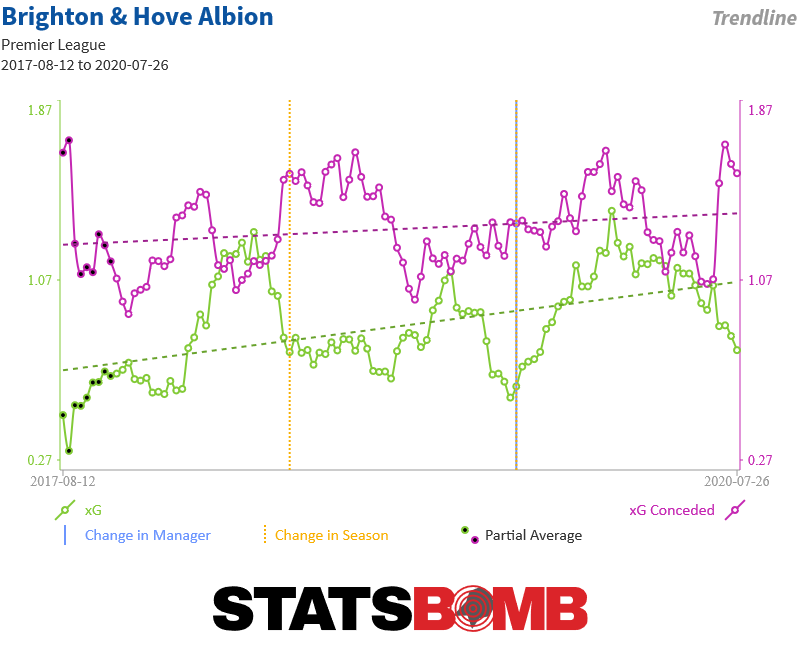
The problem is that neither look all that good. Brighton were poor at the end of last season and continue to put forth low numbers. On the attacking side, where Potter is having a significant impact, the Seagulls’ 15.63 xG for is the third-worst in the Premier League.
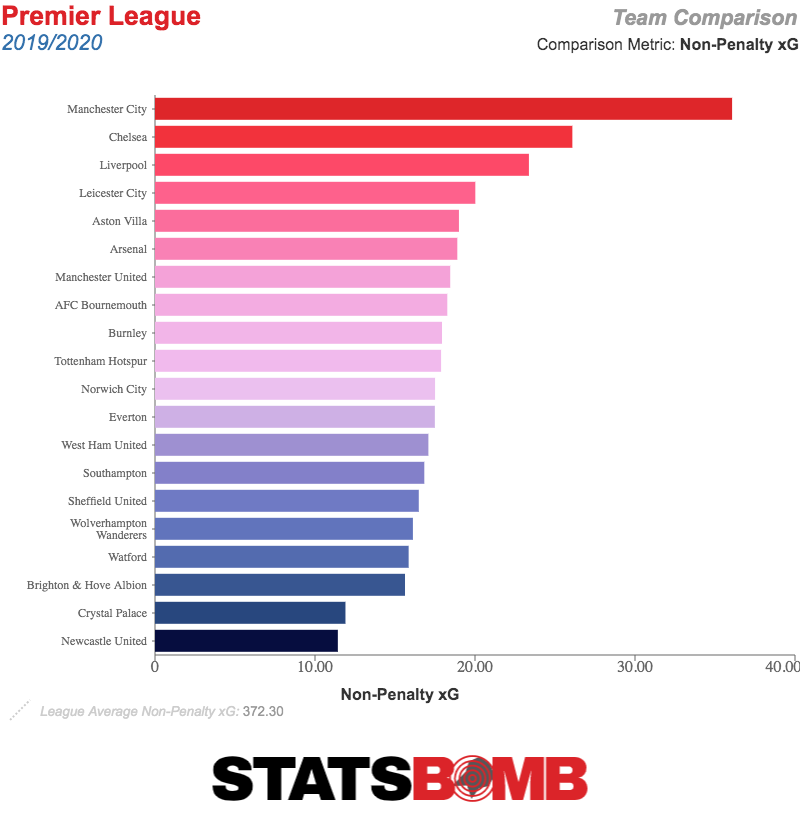
The 22.24 xG conceded is also that of a below-average side. If there’s a more apt descriptor of this Brighton side than “below average”, I’m not sure I know it.
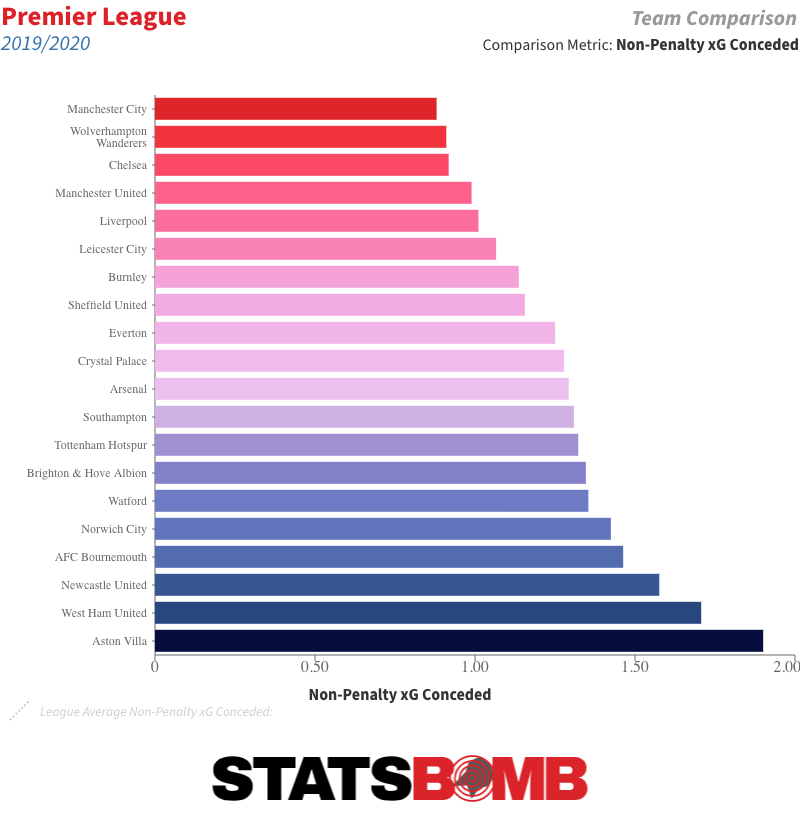
Brighton are certainly a more aggressive side in the press than under Hughton, which could be a source of long-term optimism. Last season, the Seagulls allowed opponents to make just over 13 passes before attempting to win the ball back, while this year that number is less than 9. It could indicate why the side are less effective defensively.
Pressing systems take a long time for players to learn, even the most talented players studying under the world’s best managers. It took Jürgen Klopp two full years at Liverpool before the side stopped being famous for comical errors at the back, while Manchester City had their own issues in Pep Guardiola’s first season. When making such a drastic style shift, both practice on the training pitch and the right additions in the transfer market are essential.

Currently, Brighton have the hallmarks of a bad pressing team in the profile of shots they concede. Potter’s side are a middling shot-suppressing force, facing 13.5 per game. But once teams break the press, they’re having a good time getting real chances, with Brighton dealing with an xG per shot conceded of 0.12. This is a 50% increase from last season in terms of the likelihood of the average shot they face being scored. Brighton are going to have to learn to coordinate their press better if they want to avoid bleeding good chances.

In possession, it feels like things remain a work in progress. Pascal Gross pulls the strings both in open play and from set pieces, and continues to be this side’s x-factor. He leads the side in deep progressions and xG assisted per 90 minutes, while putting up the second most pressures. Concerns remain about Gross’ lack of mobility for a Potter team, but his ability on the ball, effort without it, and in-game intelligence cannot be doubted. The other player putting up strong numbers in attack is Neal Maupay, the mobile young striker signed from Brentford. He’s around a goal and a half behind his xG, which diminishes what looks like a very promising return in a less than impressive attacking side.
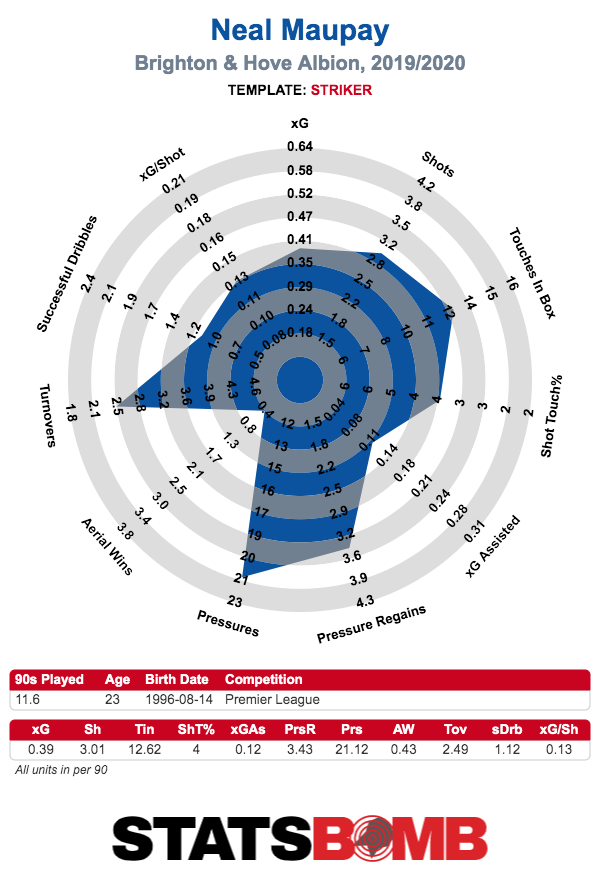
This is still a very rough draft of a Potter side, but there are signs of life. Brighton are now a side that average 55% of possession, with Mat Ryan playing the ball shorter than any other goalkeeper in the division. Yet the Seagulls are not working the ball into dangerous areas at a high frequency, offering only a league-average number of completed passes within 20 metres of the opposition goal, and a below-average number of passes inside the box.
Still, Potter has avoided the initial worry of completely breaking what was a serviceable unit under Hughton as he moves to something very different. This is something the Brighton higher-ups have very much wanted to do for some time, his recent contract extension indicates they see Potter as the long term man for it. Staying in the top flight during a clear transition year would be both the minimum requirement and more than enough to stick on this path, and from there onward there’s no reason to think Brighton couldn’t build something interesting in the coming years.
Stats of Interest
Brighton’s Mat Ryan is the second-best shot-stopper in the league this season according to StatsBomb’s model. The best? None other than Kasper Schmeichel. The Leicester ‘keeper didn’t show up remotely as well in the previous two seasons, so it seems improbable that this good form will last forever. But for now, he deserves a great deal of credit for his role in the excellent start the Foxes have made to this season.

Arsenal finally pulled the trigger on sacking Unai Emery, with Freddie Ljungberg taking charge for the time being. Two of the biggest concerns in the Emery era were their horrific shot volume numbers and away form. On those fronts, there were at least positive signs against Norwich this weekend. Arsenal outshot an opponent away from home for only the second time this season, managing all of one more chance than the Canaries. Yay?
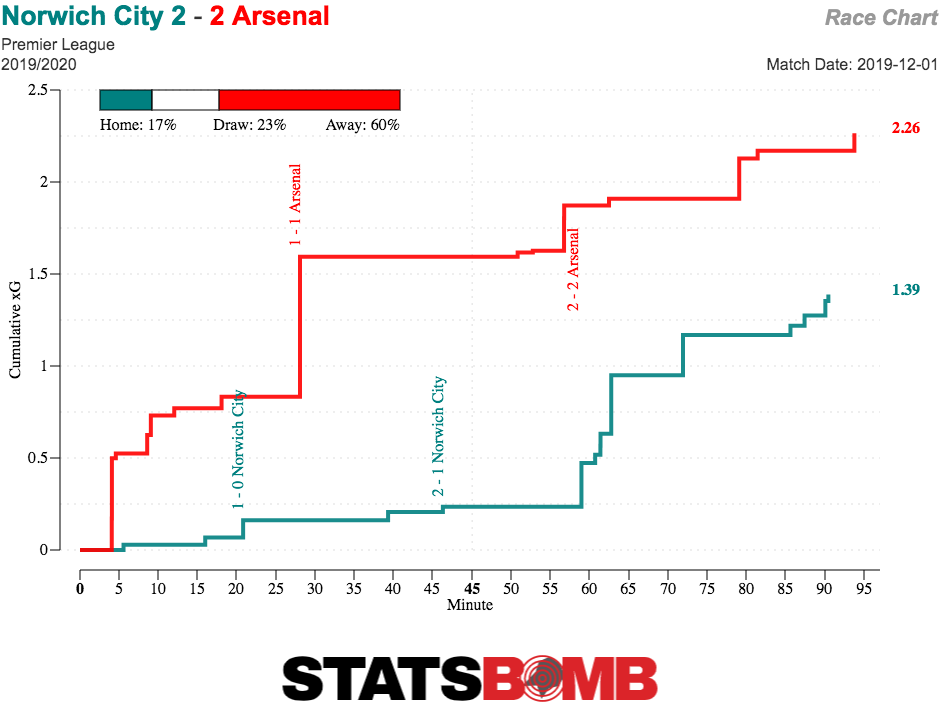
No player with at least 600 minutes played has a higher xG per 90 than Tammy Abraham. Next up is Sergio Agüero. Any guesses as for third? Yep, that’s right. Chris Wood isn’t always the most elegant player to watch. He’s probably not going to maintain this form forever. But the guy is getting some really good shots off right now.
